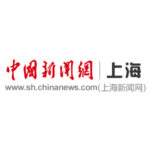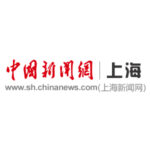This morning, the municipal government information office held the tenth session of the “Practical Work Draws Answers, Relay New Blueprint” Shanghai “14th Five-Year Plan” achievements series press conference. Focusing on the theme of “Courageously Shouldering Transformation Responsibilities, Bravely Serving as Scientific Innovation Vanguards, Creating a Modern Transformation Model for the New Era,” the Baoshan District Party Committee Secretary introduced the district’s construction and development achievements during the “14th Five-Year Plan” period. District leaders and heads of various development, planning, science and technology, and waterfront committees jointly attended the press conference and answered questions.
Since the “14th Five-Year Plan” began, Baoshan District has resolutely implemented central and municipal government decisions, anchored to the strategic goals of “Shanghai’s Main Scientific Innovation Center, International Metropolis Main Urban Area, and Municipal Green Low-Carbon Transformation Model District,” developed “Six Major Industries” to deepen industrial transformation, promoted “Three Arrows Firing Together” to deepen spatial transformation, and built “Four Urban Districts” to deepen governance transformation. Socio-economic development has achieved positive results, with the “14th Five-Year Plan” targets and tasks nearing successful completion.
Over the past five years, we have pursued steady progress with continuous economic strength enhancement. Anchored to the primary task of high-quality development, prioritizing action and striving for leaps, economic development has achieved new breakthroughs. Last year’s regional GDP exceeded 210 billion yuan; average annual growth of district-level general public budget revenue surpassed GDP growth; industrial output value reached 260 billion yuan; over the first four years, cumulative fixed asset investment exceeded 240 billion yuan, with industrial investment proportion rising to 20%; total retail sales surpassed 360 billion yuan, with average annual growth of 5.7%; over the first four years, commercial sales exceeded 4 trillion yuan; revenue from large-scale service industries grew an average of 6.1% annually, with service industry added value accounting for over 70%, continuously improving economic development quality and efficiency.
Over the past five years, we have seized opportunities with continuously enhanced innovation vitality. Adhering to “central requirements, municipal deployments, Baoshan actions,” we quickly advanced the construction of Shanghai’s main scientific innovation center, actively contributing to the city’s innovation landscape. During the “14th Five-Year Plan” period, R&D investment intensity reached 4.69%, achieving significant improvement; high-tech enterprise numbers grew an average of 20.3% annually. We streamlined achievement transformation chains, completed the city’s first concept verification service equity registration, certified 11 concept verification centers, built 36 municipal-level or higher innovation and entrepreneurship incubation carriers, established university science parks in cooperation with multiple universities, forming cluster development with western and eastern innovation cores. Various university science parks have cumulatively transformed nearly 300 scientific achievements and established nearly 1,000 enterprises. We optimized innovation and entrepreneurship ecosystems, deepened national innovation reform pilot tasks including “investment before equity” and innovation consortiums, explored “rent before equity” and “service before equity,” creating integrated “consultation-funding-investment-service” systems. Accelerated talent service reforms and created joint fast-handling mechanisms for talent “key small matters,” enabling more talents to afford living, stay, and develop well in Baoshan.
Over the past five years, we have accelerated transformation with industries moving higher and newer. Accelerated cultivation and development of new productive forces, actively embedding into the city’s industrial landscape, strengthening industry introduction and cultivation, accelerating industrial clustering, and optimizing industrial ecosystems, fully building modern industrial systems centered on “Six Major Industries.” Leading industries continuously expanded. Seizing city-district collaboration opportunities, created high-end new materials, robotics and high-end equipment and other hundred-billion-level industrial clusters. Advanced Wusong Materials Laboratory integration into the city’s national laboratory system with substantive operation, supported Shanghai University in establishing the National Key Laboratory for Nuclear Power Critical Materials. Co-established Shanghai University General Intelligent Robotics Research Institute with robotics companies, with Shanghai Robot Industrial Park gathering nearly 300 upstream and downstream enterprises. Created municipal-level productive internet service platform key clustering zones, established Shanghai Steel Sector Platform Economy Demonstration Zone, with steel platform transaction scale accounting for two-thirds of the national total. Specialty industries refined and strengthened. In the first half of 2025, cruise ship dockings and passenger出入境接待 accounted for 51% and 70% of national operations respectively, with the first domestically built large cruise ship beginning operations. Green low-carbon industry scale exceeded hundred billion, creating green low-carbon supply chain core functional zones and public service platforms, launching the domestic first carbon footprint quantification industrial software with international mutual recognition. Established National Engineering Research Center for Cell Industry Key Common Technologies. Future industries seized opportunities. Accelerated layout in frontier fields including embodied intelligence, solid-state batteries, and quantum technology. We accelerated creation of business environments enabling



